
|
Under the leadership of Generalfeldmarschall Erwin Rommel, the Deutsches Afrika Korps (or DAK) trounced the British Eighth Army time and time again. The ‘Desert Fox’, as he became known, gained an almost mythical status as a military genius to both friend and foe alike. Rommel owed his success to a combination of his own experience and hard-driving nature, and the superb troops he commanded. Serving as a Leutnant in the First World War, Rommel showed an aggressive style that led to spectacular victories over forces much stronger than his own. Check out the German German Dak Panzer Company in the online store here... |
|
|
The German German Dak Panzer Company includes: • Seven Plastic Panzer III tanks |
|
 |
|
|
|
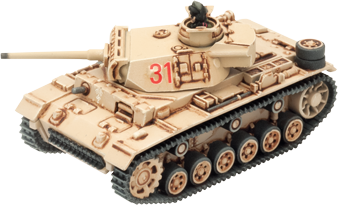 |
The Panzer III is Germany's standard tank, making up over two-thirds of their tank strength. It has good mobility, is well armoured, and is armed with an effective 5cm (2-inch) gun. Manned by veteran crews that are confident in |
|
|
|
|
As the war progressed, the biggest problem the panzer troops faced changed from being hidden anti-tank guns, for which the short-barrelled Panzer IV was the answer, to increasingly heavily armoured enemy tanks. Fitting the Panzer IV with a long-barrelled anti-tank gun was the |
 |
|
|
|
 |
The German Army appreciated the heavy 8.8cm FlaK36 anti-aircraft gun as an anti-tank gun. It's ability to knock out any tank at long range was far more interesting to front-line soldiers than its ability to protect their supply lines from Allied bombing raids. |
 |
|
| The 10.5 cm leFH 18 (leichte Feldhaubitze "light field howitzer") was a German light howitzer used in World War II and the standard artillery piece of the Wehrmacht, adopted for service in 1935 and used by all divisions and artillery battalions. A major advance on its predecessor the 10.5 cm leFH 16, the leFH 18 was superior in caliber to its early opponents in the war, with good range and firepower |  |
 |
|
|
After the Spanish Civil War, the German authorities started to think that a new anti-tank gun would be needed, even though the 3.7 cm Pak 36 had proven to be very successful. They asked Rheinmetall-Borsig to produce a new and more capable AT-gun. The 5 cm PaK 38 was approved for mass production in 1939. Armor-piercing projectiles fired by this gun were known to pierce the armor of British infantry and cruiser tanks as well as that of U.S. light and medium tanks. The gun proved especially effective in jamming tank turrets by hits at the junction of the turret and hull. These hits fuze the metal of the two parts together and immobilize the turret. |
 |
| Contact the customer service team at customerservice@battlefront.co.nz if you have issues with any components. |
| Flames Of War 4th Edition Mini Rulebook (x1) |
 |
|
Quick Start Guide (x1) Click here to download the pdf (Right click save as)... |
 |
| Plastic Panzer III Sprue (x7) |

|
| Plastic Panzer IV Sprue (x4) |
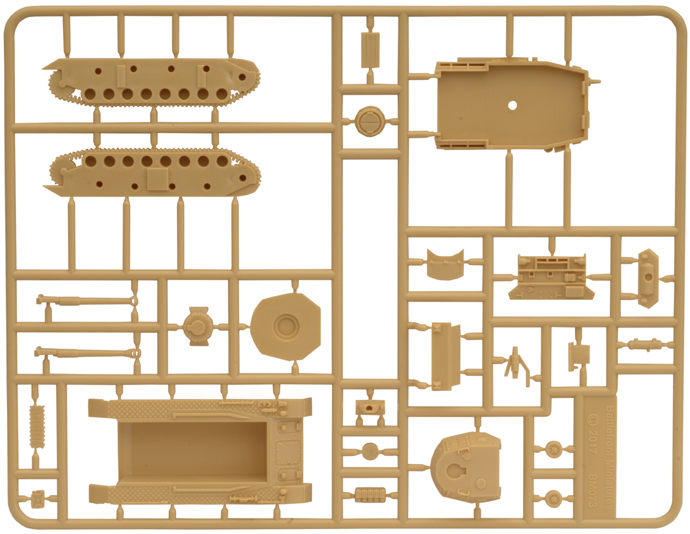
|
| Plastic 8.8cm Heavy AA Gun Sprue (x2) |
 |
| Plastic Tank Commander Sprue (x1) | Plastic 8.8cm Gun Crew Sprue (x2) |
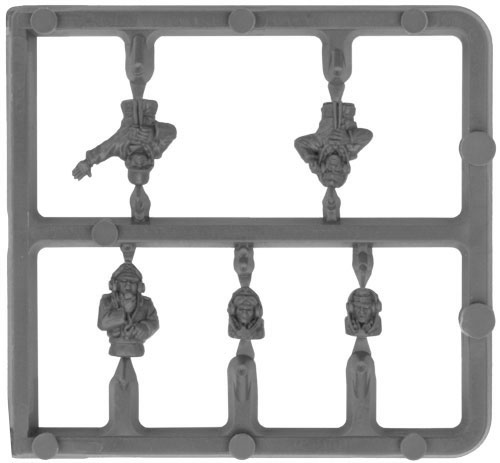 |
 |
| Plastic 10.5cm Gun Sprue (x4) |
 |
| Plastic Gun Crew Sprue (5cm) (x4) | Plastic Gun Crew (10.5cm) (x4) |
 |
 |
| 5cm Tank-Hunter Sprue (x3) |
 |
| Decal Sheet (One Of Each) | |
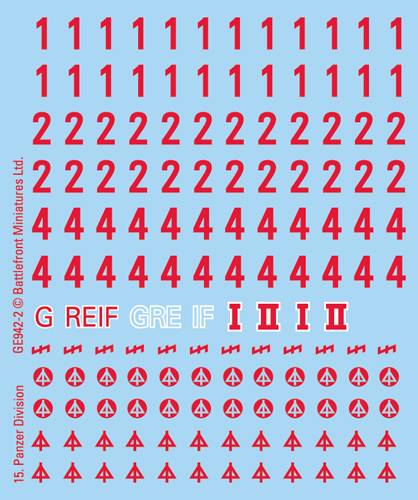 |
 |
| Plastic Bases | |
 |
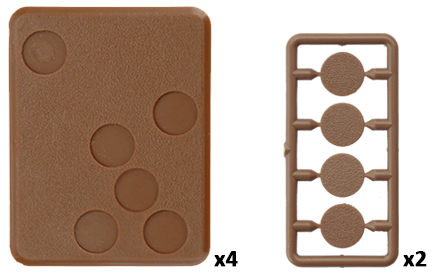 |
| Unit Cards | |
| Afrika Korps Force Card (x1) | Panzer III Tank Comapny HQ (x1) |
 |
 |
| Panzer III Tank Platoon (x1) | Panzer III (Uparmoured) Tank Platoon (x1) |
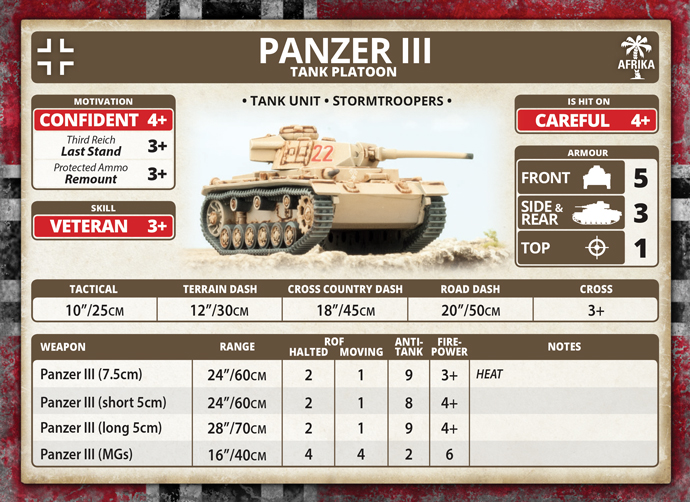 |
 |
| Panzer III (Mixed) Tank Platoon (x1) | Panzer IV Tank Platoon (x1) |
 |
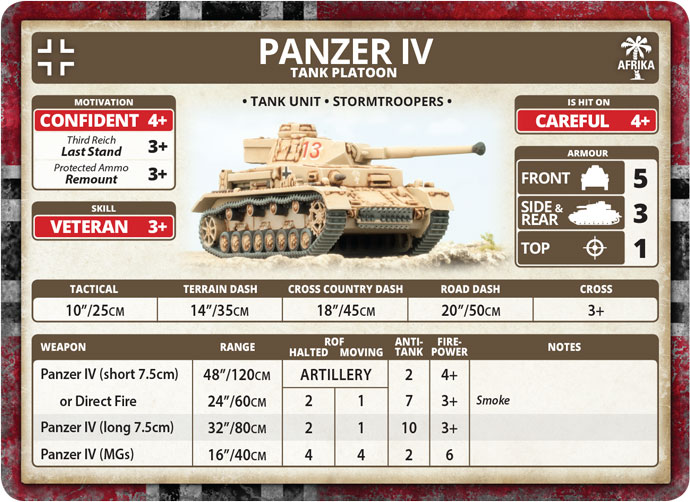 |
| 5cm Tank-hunter Platoon (x1) | 10.5cm Artilery Battery (x1) |
 |
 |
| 8.8cm Heavy AA Platoon (x1) |
 |
 |
 |
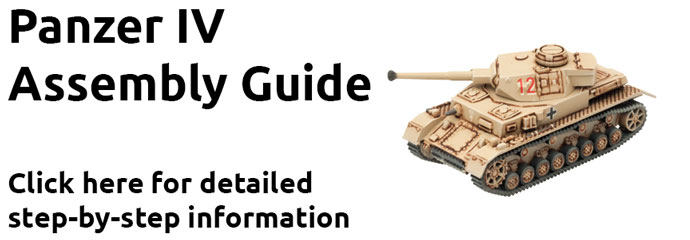
|

|

|
 |




